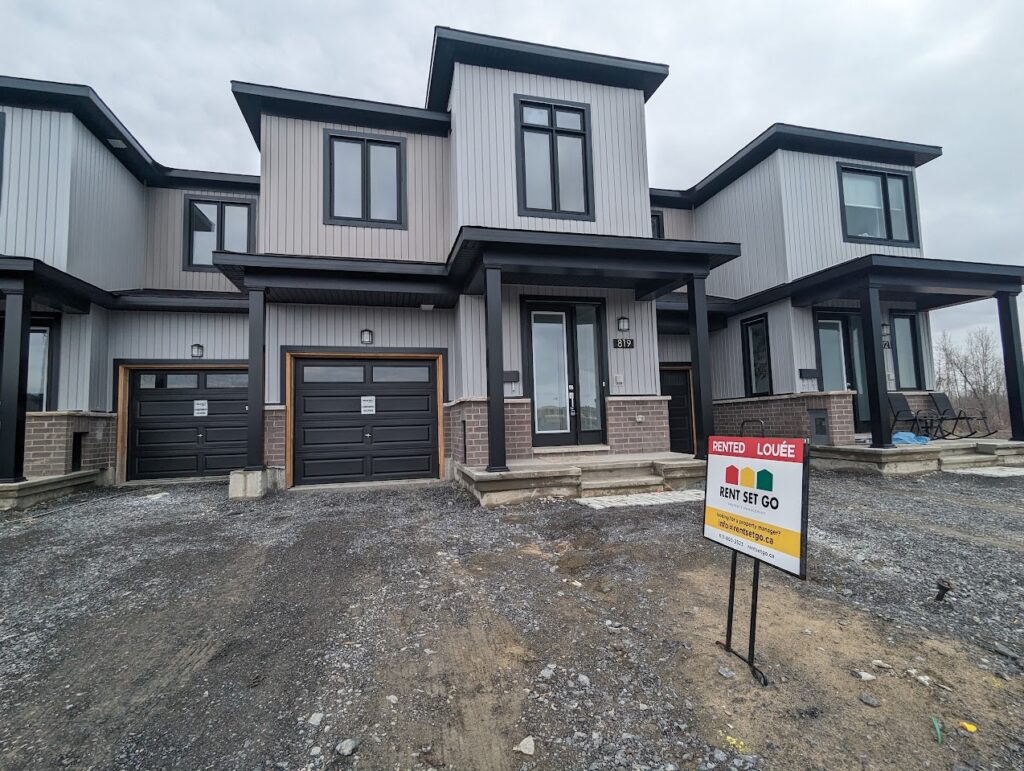Interest rates play a crucial role in determining the cost of borrowing money, which directly influences the housing market. As interest rates rise, the cost of obtaining a mortgage increases, leading to higher monthly payments for homebuyers. This, in turn, affects housing affordability, as potential buyers find themselves with less purchasing power. In today’s economic environment, understanding how rising interest rates shape housing affordability is more important than ever.

How Rising Interest Rates Affect Mortgage Rates
Rising interest rates have a direct and significant impact on mortgage rates, which are the cornerstone of most home financing. When central banks, such as the Federal Reserve in the United States or the Bank of Canada here in Canada, decide to increase their benchmark interest rates, it generally leads to higher borrowing costs across the board, including for home loans. This occurs because lenders adjust their mortgage rates to reflect the higher cost of borrowing money themselves.
Fixed-Rate vs. Variable-Rate Mortgages
One of the most apparent effects of rising interest rates is on fixed-rate mortgages, where the interest rate remains the same throughout the loan term. As interest rates increase, the cost of obtaining a new fixed-rate mortgage rises, leading to higher monthly payments for new borrowers. For example, if interest rates increase from 3% to 4%, a borrower with a 30-year mortgage of $300,000 would see their monthly payment increase by approximately $143. This may seem like a small amount at first glance, but over the life of the loan, it amounts to more than $51,000 in additional payments.
Variable-rate mortgages (ARMs), on the other hand, have interest rates that can change periodically based on market conditions. Borrowers with ARMs may initially benefit from lower rates compared to fixed-rate mortgages, but as interest rates rise, so too can their monthly payments. This unpredictability can make budgeting more challenging and may lead to higher overall costs if interest rates continue to climb.

Impact on Refinancing
Rising interest rates also affect homeowners looking to refinance their existing mortgages. During periods of low interest rates, refinancing to a lower rate can save homeowners thousands of dollars in interest over the life of their loan. However, when rates rise, the incentive to refinance diminishes. Homeowners who locked in lower rates during previous years may hold off on refinancing, while those who need to refinance could face higher costs, potentially negating any savings.
The overall effect is that higher mortgage rates make homeownership more expensive, reducing affordability for prospective buyers and leading to a cooling effect in the housing market.
The Impact on Homebuyers’ Purchasing Power
As interest rates rise, one of the most significant consequences is the reduction in homebuyers’ purchasing power. Purchasing power refers to the amount of home a buyer can afford based on their income, savings, and the mortgage rates available at the time of purchase. When mortgage rates increase, monthly payments rise, which, in turn, means that buyers may need to settle for less expensive homes or make larger down payments to maintain the same monthly costs.
How Mortgage Rates Influence Purchasing Power
Let’s consider a practical example. Suppose a homebuyer is pre-approved for a mortgage at a 3% interest rate and can afford a $1,500 monthly payment. At this rate, they might qualify for a $350,000 home. However, if interest rates rise to 4%, that same $1,500 monthly payment would only qualify them for a home worth approximately $315,000. This $35,000 reduction in purchasing power can significantly affect the types of homes a buyer can consider, pushing them toward smaller homes, homes in less desirable locations, or homes in need of repair.

The Broader Economic Impact
The reduction in purchasing power does more than just limit individual homebuyers; it can also have broader economic implications. When many buyers can no longer afford the homes they once could, demand for those homes declines. This can lead to a cooling in the housing market, with sellers possibly needing to lower prices to attract buyers. Over time, this could stabilize or even reduce home prices, though the increased cost of borrowing may still outweigh these potential savings for many buyers.
The Psychological Effect on Buyers
Rising interest rates can also have a psychological effect on potential buyers. The fear of missing out on favorable rates can push some buyers to rush into the market before rates climb even higher, potentially leading to hasty decisions. Conversely, the realization that they can afford less than they originally anticipated may cause other buyers to delay purchasing altogether, hoping for future rate drops. This mix of urgency and hesitation can create volatility in the housing market, further complicating the landscape for buyers and sellers alike.
In essence, the impact of rising interest rates on purchasing power underscores the delicate balance between affordability and market conditions. As rates continue to rise, understanding and adapting to these changes becomes crucial for prospective homebuyers.
Challenges for First-Time Homebuyers
First-time homebuyers face unique challenges in any housing market, but these challenges are amplified in an environment of rising interest rates. These buyers often have less financial flexibility and may be more sensitive to changes in the cost of borrowing. As interest rates increase, the hurdles they must overcome to purchase a home become even more formidable.
Affordability Concerns
First-time buyers typically have smaller savings and may struggle to afford a substantial down payment. Higher interest rates exacerbate this issue by increasing the monthly mortgage payments, which can make it harder to qualify for loans. For instance, a modest rise in interest rates can push the monthly mortgage payments beyond what a first-time buyer can comfortably afford, effectively pricing them out of the market for many homes.
Additionally, first-time buyers may be competing against more established buyers who have equity from previous homes or higher incomes, allowing them to better absorb the impact of rising rates. This disparity can lead to increased competition for lower-priced homes, driving up prices in that segment of the market and further straining first-time buyers’ budgets.

Limited Options and Compromises
As rising interest rates reduce purchasing power, first-time homebuyers may find themselves with fewer options. They might have to compromise on the size, location, or condition of the homes they consider. For example, they may need to look at smaller homes, properties farther from city centers, or homes that require significant renovations. Each of these compromises can add layers of complexity to the homebuying process, from longer commutes to additional costs for repairs or upgrades.
In some cases, first-time buyers may opt for adjustable-rate mortgages (ARMs) as a way to afford a home, taking advantage of the typically lower initial rates. However, ARMs come with the risk of rising payments if interest rates continue to increase, potentially leading to financial strain down the line.
The Impact of Debt-to-Income Ratios
Another significant challenge for first-time buyers in a rising-rate environment is the effect on debt-to-income (DTI) ratios. Lenders use DTI ratios to determine a buyer’s ability to manage monthly payments and repay debts. As interest rates rise, monthly mortgage payments increase, which can push a buyer’s DTI ratio above the acceptable threshold for lenders. This can result in loan applications being denied or approved for lower amounts, further limiting what first-time buyers can afford.
Government and Institutional Support
In response to these challenges, some first-time buyers may seek assistance through government programs designed to help with down payments, closing costs, or providing favorable loan terms. Programs such as FHA loans in the United States offer lower down payment requirements and more lenient credit standards, which can help first-time buyers enter the market despite rising interest rates. However, these programs often come with their own set of criteria and limitations, which buyers must carefully navigate.
In summary, rising interest rates create a challenging landscape for first-time homebuyers. These buyers must carefully consider their options, potentially seek assistance, and be prepared to make compromises in order to achieve homeownership in a less favorable financial environment.
Long-Term Implications for the Housing Market
The rise in interest rates has both immediate and long-term implications for the housing market, influencing everything from home prices to buyer behavior and overall market stability. As interest rates continue to increase, these long-term effects become more pronounced, shaping the future of the housing market in several key ways.
Cooling Home Prices
One of the most significant long-term impacts of rising interest rates is the potential cooling of home prices. As borrowing becomes more expensive, fewer buyers can afford to enter the market, which reduces demand. When demand drops, the rapid price increases seen in many housing markets may begin to slow or even reverse, leading to a stabilization or decline in home prices.
For sellers, this could mean that homes remain on the market longer and may not sell for as much as they might have in a low-interest environment. For buyers, while the initial cost of borrowing is higher, the potential for lower home prices could offset some of the additional costs over the life of a mortgage.
Shifts in Buyer Demographics
Rising interest rates are likely to shift the demographics of homebuyers. Higher borrowing costs may deter younger, first-time buyers, or those with lower incomes, from entering the market. In contrast, wealthier buyers or those who have built significant equity in previous homes may continue to purchase property, albeit with more caution. This could lead to a market dominated by move-up buyers and investors, with fewer first-time and lower-income buyers participating.

Impact on Housing Inventory
Higher interest rates can also affect the supply side of the housing market. Homeowners with low fixed-rate mortgages may be less inclined to sell their homes and purchase new ones, given that they would likely have to finance their new home at a higher interest rate. This reluctance to sell could contribute to lower inventory levels, especially in markets where housing supply is already tight. Reduced inventory, in turn, could help maintain higher prices even as demand softens.
Rental Market Dynamics
As more prospective buyers find themselves unable to afford homeownership due to rising interest rates, there could be an increased demand for rental properties. This shift could drive up rents, particularly in markets where the supply of rental units is limited. Higher rental demand could also encourage more investors to purchase properties for the purpose of renting them out, further influencing the housing market dynamics.
Long-Term Rate Predictions and Market Uncertainty
The long-term outlook for interest rates is uncertain and depends on various economic factors, including inflation, employment rates, and central bank policies. If interest rates continue to rise, the housing market could experience a prolonged period of adjustment, with slower price growth and altered buyer behavior. However, if rates stabilize or decrease in the future, it could lead to renewed interest in home buying, potentially sparking another cycle of market activity.
Overall, the long-term implications of rising interest rates are complex and multifaceted. They affect not only the immediate affordability of homes but also the broader trends in housing market behavior, inventory levels, and buyer demographics. As the market adjusts to these new conditions, both buyers and sellers will need to adapt their strategies to navigate the evolving landscape.
The ripple effect of rising interest rates on housing affordability is undeniable, impacting every aspect of the market from mortgage rates to homebuyer behavior. As borrowing costs increase, the affordability of homes declines, forcing buyers to adjust their expectations and, in some cases, reconsider their ability to purchase a home altogether. This shift not only affects individual buyers but also has broader implications for the housing market, including potential cooling of home prices, changes in buyer demographics, and shifts in both the home sale and rental markets.
For first-time buyers, the challenges are particularly pronounced. The combination of higher interest rates and reduced purchasing power can make entering the market seem daunting, if not impossible. However, by staying informed, exploring available assistance programs, and being prepared to make strategic compromises, these buyers can still find opportunities in an evolving market.
Looking ahead, the long-term impact of rising interest rates will continue to shape the housing market in significant ways. As the market adjusts to new financial realities, both buyers and sellers must remain adaptable, understanding that the dynamics of housing affordability are closely tied to the broader economic environment. By doing so, they can navigate the challenges posed by higher interest rates and make informed decisions that best suit their financial circumstances and long-term goals.
